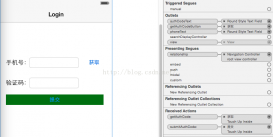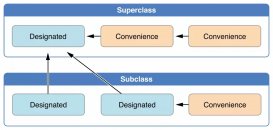模式匹配是 Swift 中非常常见的一种编程模式,使用模式匹配,可以帮助我们写出简明、清晰以及易读的代码,使我们的代码变得简洁而强大。
条件判断中的模式匹配
条件判断是我们使用最普遍的流程控制,在 Swift 中,只能接受 Bool 类型的值作为条件体;除了直接判断 Bool 值之外,我们还能使用使用条件语句进行可选绑定,这在我们开发中是非常常用的方式。
匹配枚举值
在 Swift 中,创建的枚举类型默认是不可比较的(没有实现Comparable协议),这就意味着我们不能直接使用==操作符来判断两个枚举值是否相等,这种情况下,需要使用模式匹配:
创建一个枚举类型:
|
1
2
3
4
|
enum Result { case success case failure} |
初始化一个枚举值:
|
1
|
let result = Result.success |
使用模式匹配来判断创建的枚举值的值:
|
1
2
3
|
if case .success = result { print("Value of result is success.")} |
可选绑定
创建一个可选值:
|
1
|
let optionalInt: Int? = 1 |
使用可选绑定的方式进行解包:
|
1
2
3
4
5
6
7
8
9
10
|
if let val = optionalInt { print("The value of optionalInt is (val)")}func handleGuard() { guard let val = optionalInt else { return } print("The value of optionalInt is (val)")}handleGuard() |
可选绑定的另外一种模式,这也是可选绑定中最基础的模式:
|
1
2
3
|
if case .some(let val) = optionalInt { print("The value of optionalInt is (val)")} |
还可以简化为:
|
1
2
3
|
if case let val? = optionalInt { print("The value of optionalInt is (val)")} |
循环中的模式匹配
问题来了,if let 模式的可选绑定,只能实现一个可选值的绑定,如果我们需要匹配一个数组里边的可选值怎么办呢?这时候我们就不能使用 if let 的形式了,需要使用到 if case let 的形式
创建一个包含可选值的数组:
|
1
|
let values: [Int?] = [1, nil, 3, nil, 5, nil, 7, nil, 9, nil] |
进行遍历:
|
1
2
3
|
for val in values { print("Value in values is (String(describing: val))")} |
或者:
|
1
2
3
4
|
var valuesIterator = values.makeIterator()while let val = valuesIterator.next() { print("Value in values is (String(describing: val))")} |
我们得到了所有的值与可选值,如果我们需要过滤可选值,我们可以这样做:
|
1
2
3
|
for val in values.compactMap({ $0 }) { print("Value in values is (val)")} |
这样做,增加了时间复杂度,需要进行两次遍历才能将数据过滤出来。我们可以使用模式匹配的方式来这样做:
|
1
2
3
|
for case let val? in values { print("Value in values is (val)")} |
或者:
|
1
2
3
4
|
valuesIterator = values.makeIterator()while let val = valuesIterator.next(), val != nil { print("Value in values is (String(describing: val))")} |
这样就可以将 nil 值给过滤了,是不是很简单?还可以使用 for case 匹配枚举值数组:
|
1
2
3
4
5
|
let results: [Result] = [.success, .failure]for case .success in results { print("Values in results contains success.") break} |
对于复杂的枚举类型:
|
1
2
3
4
5
6
|
enum NetResource { case http(resource: String) case ftp(resource: String)}let nets: [NetResource] = [.http(resource: "https://www.baidu.com"), .http(resource: "https://www.apple.cn"), .ftp(resource: <a rel="external nofollow" href="ftp://192.0.0.1">ftp://192.0.0.1</a>)] |
过滤 http 的值:
|
1
2
3
|
for case .http(let resource) in nets { print("HTTP resource (resource)")} |
for 循环使用 where 从句
除此之外,我们还可以在 for 循环后边跟上一个 where 从句来进行模式匹配:
|
1
2
3
|
for notNilValue in values where notNilValue != nil { print("Not nil value: (String(describing: notNilValue!))")} |
查询一个数组里边所有能被3整除的数:
|
1
2
3
4
|
let rangeValues = Array(0...999)for threeDivideValue in rangeValues where threeDivideValue % 3 == 0 { print("Three devide value: (threeDivideValue)")} |
查询所有含有3的数:
|
1
2
3
|
for containsThree in rangeValues where String(containsThree).contains("3") { print("Value contains three: (containsThree)")} |
Switch 中的模式匹配
Switch 中的模式匹配也很常用,在 Switch 中合理地使用模式匹配可以为我们带来很多好处,可以使我们的代码更简洁,同时可以减少代码量和增加开发效率。
区间匹配
|
1
2
3
4
5
6
7
8
9
10
11
12
13
14
15
16
17
|
let value = 188switch value {case 0..<50: print("The value is in range [0, 50)")case 50..<100: print("The value is in range [50, 100)")case 100..<150: print("The value is in range [100, 150)")case 150..<200: print("The value is in range [150, 200)")case 200...: print("The value is in range [200, ")default: break}// The value is in range [150, 200) |
匹配元组类型
创建一个元组类型:
|
1
|
let tuples: (Int, String) = (httpCode: 404, status: "Not Found.") |
进行匹配:
|
1
2
3
4
5
|
switch tuples {case (400..., let status): print("The http code is 40x, http status is (status)")default: break} |
创建一个点:
|
1
|
let somePoint = (1, 1) |
进行匹配:
|
1
2
3
4
5
6
7
8
9
10
11
12
|
switch somePoint {case (0, 0): print("(somePoint) is at the origin")case (_, 0): print("(somePoint) is on the x-axis")case (0, _): print("(somePoint) is on the y-axis")case (-2...2, -2...2): print("(somePoint) is inside the box")default: print("(somePoint) is outside of the box")} |
如上,我们在匹配的时候可以使用下划线 _ 对值进行忽略:
|
1
2
3
4
5
|
switch tuples {case (404, _): print("The http code is 404 not found.")default: break} |
在 switch case 中使用 where 从句
在 case 中使用 where 从句可以使我们的模式匹配看起来更加精简,使匹配的模式更加紧凑:
|
1
2
3
4
5
6
7
8
9
|
let yetAnotherPoint = (1, -1)switch yetAnotherPoint {case let (x, y) where x == y: print("((x), (y)) is on the line x == y")case let (x, y) where x == -y: print("((x), (y)) is on the line x == -y")case let (x, y): print("((x), (y)) is just some arbitrary point")} |
总结
Swift 中模式匹配的种类
模式匹配可以说是 Swift 中非常强大的一种编程模式,使用良好的模式匹配,可以帮助我们写出简介、优雅的代码,Swift 中的模式匹配包括以下种类:
- 条件判断:if, guard
- 可选绑定:if let, guard let, while let ...
- 循环体:for, while, repeat while
- switch
- do catch
什么时候使用 where 从句?
我们可以在前文的例子中看到,在很多进行模式匹配的地方还使用了 where 从句,where 从句的作用就相当于在模式匹配的基础上在加上条件限制,使用 where 从句等价于:
|
1
2
3
4
5
|
for notNilValue in values { if notNilValue != nil { print("Not nil value: (String(describing: notNilValue!))") }} |
可以看出,使用 where 从句可以使我们的代码更加简洁和易读,什么时候使用 where ? 或者说在哪里可以使用 where ? Swift 文档中并没有对 where 的详细使用进行介绍,但是在实践中发现,where 可以使用在以下地方:
- for 循环语句
- switch 分支
而对于 if, guard 与 while ,我们不能在其后面添加 where 从句,因为他们本身可以进行多个条件的组合. where 从句还有一个用法就是对泛型类型进行类型约束,这在泛型的章节中会有介绍.
好了,以上就是这篇文章的全部内容了,希望本文的内容对大家的学习或者工作具有一定的参考学习价值,如果有疑问大家可以留言交流,谢谢大家对服务器之家的支持。
原文链接:https://github.com/devedbox/SwiftWT/wiki/Swift中的模式匹配















